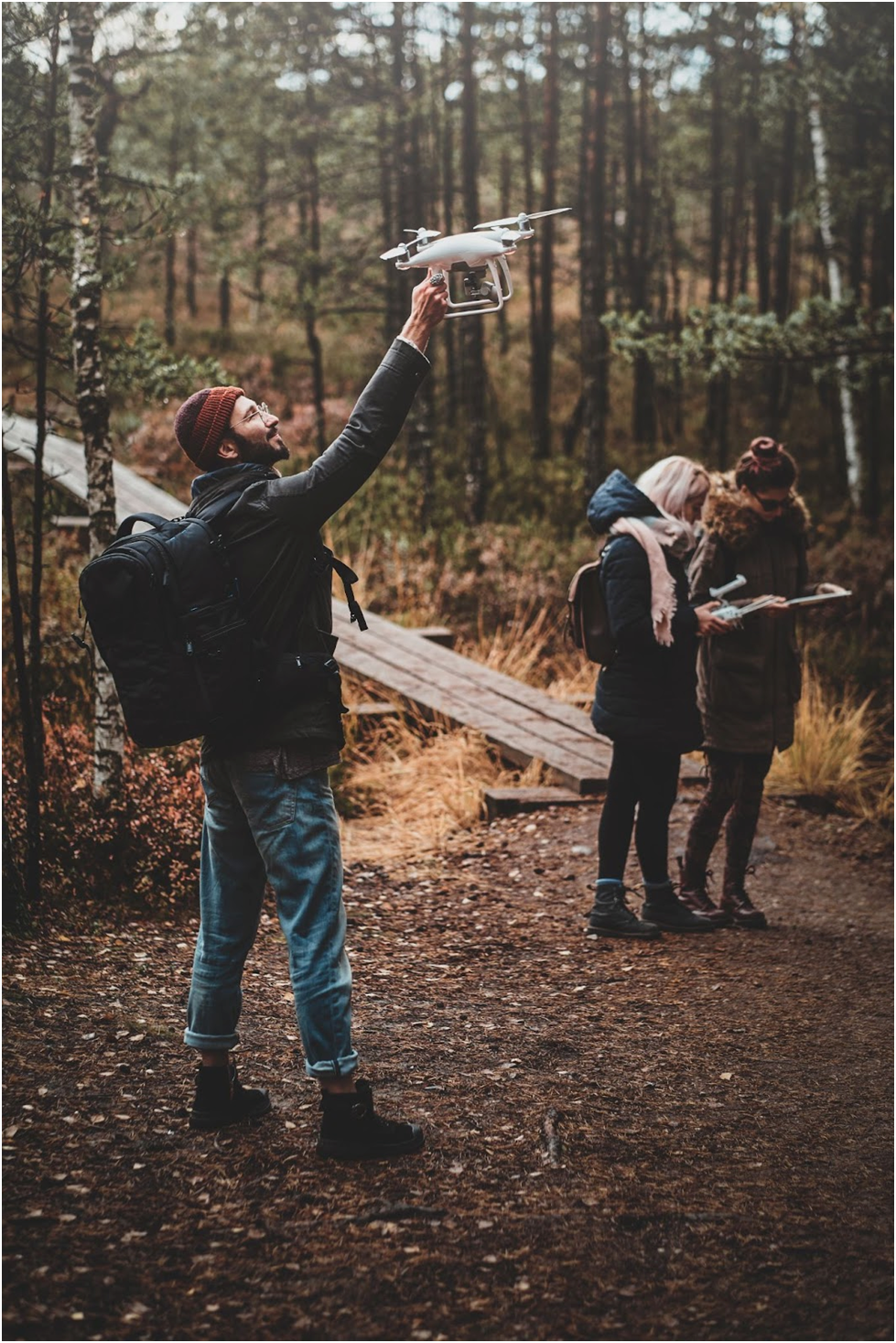Simple Tips to Shoot Better Videos with Your Drone
By Damon Johnson, Founder of Raising Drones
Let’s be honest—flying a drone is the easy part. Making cinematic, jaw-dropping videos that actually impress someone? That’s a whole different game.
At Raising Drones, we’ve worked with clients across real estate, construction, events, and beyond. And every time we fly, we’re not just there to “get the shot.” We’re there to tell a story—your story—from a perspective people don’t expect.
So whether you're a new pilot figuring out how to fly without looking like you're chasing squirrels… or an aspiring drone entrepreneur aiming to build a video portfolio that wins clients, here are some tried-and-true tips to level up your drone videography game.
1. Plan Your Flight Like a Pro (Even If You're Not One Yet)
Let me say this loud for the folks in the back: Spontaneity is not your friend when it comes to drone video.
Sure, the freedom to fly and shoot whatever catches your eye sounds appealing—but great drone videos are made in pre-production. Scout your location on Google Earth, check weather forecasts (we love UAV Forecast), and plot out your key shots ahead of time.
Apps like AirMap and B4UFLY help you avoid restricted airspace—because nothing ruins a video shoot faster than a call from the FAA.
Pro tip: Golden hour (just after sunrise or before sunset) is your best friend. The lighting is warm, shadows are long, and your footage will look cinematic without needing filters or edits.
2. Slow Down, Maverick
One of the most common rookie mistakes? Moving too fast.
Unless you're filming a high-speed car chase (and if you are, please invite me), slow, steady movements are what give drone videos that buttery-smooth, professional look.
Use gentle stick movements, and practice techniques like:
The reveal: Start behind an object (like a tree or building), and slowly rise or pan to expose the main subject.
The orbit: Circle your subject slowly while keeping them centered in the frame.
The pullback: Start close, then fly backward and upward to reveal the full scene.
These shots ooze storytelling potential and are absolute client-pleasers.
3. Use Manual Camera Settings (Don’t Let the Drone Decide)
If your drone is set to full auto, you’re letting it make creative decisions for you—and trust me, it’s not an artist.
Switch to manual settings and adjust your:
Shutter speed: A good rule is to keep it at double your frame rate (for 30 fps, use 1/60 shutter speed).
ISO: Keep it as low as possible to avoid grainy footage.
White balance: Lock it so your colors don’t shift mid-shot.
You’ll get better consistency across your clips, and your footage will be way easier to color grade later.
Need help choosing filters? ND (neutral density) filters are clutch in bright daylight—check out PolarPro for quality options.
4. Composition is Everything—Frame Like a Filmmaker
Remember that drone video is still video. And video follows the same visual storytelling rules as film.
Use techniques like:
Rule of thirds: Divide your screen into 3x3 sections and position key elements along those lines.
Leading lines: Use roads, rivers, or fences to guide the viewer’s eye toward your subject.
Symmetry: If you find a symmetrical scene, center it for that satisfying “aerial zen” vibe.
Dronestagram’s article nailed it: symmetry and simplicity create visual harmony—and harmony equals viewer retention.
5. Edit Like You Mean It (But Don’t Overdo It)
Let’s keep it real: raw drone footage rarely wows on its own. Post-production is where the magic happens.
Whether you’re using Final Cut, DaVinci Resolve, or Premiere Pro, make sure you:
Stabilize your footage (even gimbals need backup)
Color correct for consistency
Add subtle music or sound design (no stock ukulele unless it really fits the vibe)
A choppy, color-inconsistent clip will instantly make your audience bounce. Keep things smooth, cohesive, and clean.
Also, Drone U recommends creating a “shot library” over time. Store your best clips by theme or location—you never know when a client will ask for something specific, and being able to say “Oh yeah, I’ve got just the thing” makes you look like a genius.
6. Practice, Watch, Repeat
The fastest way to improve your drone videos? Watch the pros.
Break down footage from creators like Sam Kolder, Drone Film Guide, or top creators on Dronestagram. Ask yourself:
How did they transition from one shot to the next?
What’s the story or emotion behind each clip?
What didn’t they include—and why?
Then go fly. Practice one technique per flight—master the orbit before trying a rising parallax pullback in a canyon with no GPS (true story, bad idea).
Final Thoughts from the Sky
Great drone video doesn’t come from flashy maneuvers or fancy equipment—it comes from intention. From knowing what story you want to tell, planning your shots, and flying like every second matters.
At Raising Drones, we believe every flight is an opportunity to create something unforgettable. So whether you’re flying for fun, launching a drone business, or just want to shoot better videos for your Instagram, keep these tips in mind—and never stop learning.
Want more guidance or hands-on help? We offer FAA Part 107 test prep and hands-on flight training. Book a free consultation with us at Raising Drones, and let’s make your drone dreams take off—literally.
Until next time—fly smart, fly smooth, and keep Raising Drones.
Resources:

